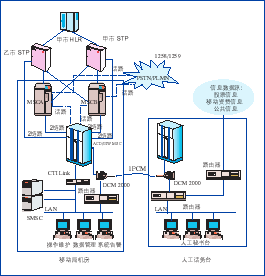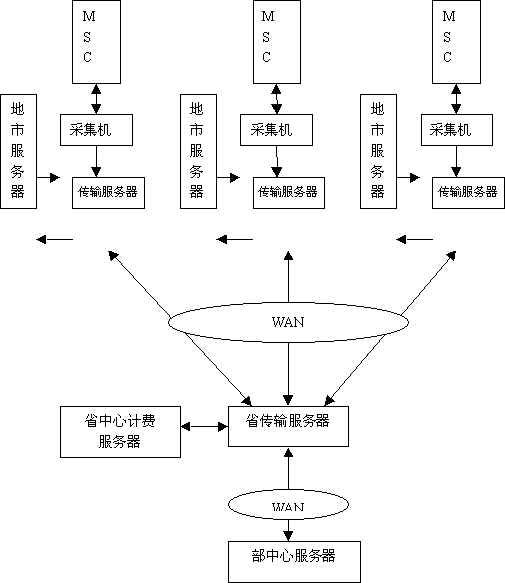The Basics
Fields
Fields are the most fundamental unit of construction: they parse (read data from the stream and return an object) and build (take an object and write it down onto a stream). There are many kinds of fields, each working with a different type of data (numeric, boolean, strings, etc.).
Some examples of parsing:
>>> from construct import UBInt16, ULInt16>>> UBInt16("foo").parse("/x01/x02")258>>> ULInt16("foo").parse("/x01/x02")513Some examples of building:
>>> from construct import UBInt16, SBInt16>>> UBInt16("foo").build(31337)'zi'>>> SBInt16("foo").build(-31337)'/x86/x97'Structs
For those of you familiar with C, Structs are very intuitive, but here’s a short explanation for the larger audience. A Struct is a sequenced collection of fields or other components, that are parsed/built in that order. Note that if two or more fields of a Struct have the same name, the last field “wins”; that is, the last field’s value will be the value returned from a parse.
>>> from construct import Struct, UBInt8, SLInt16, LFloat32>>> c = Struct("foo",... UBInt8("a"),... SLInt16("b"),... LFloat32("c"),... )>>> c<Struct('foo')>>>> c.parse("/x07/x00/x01/x00/x00/x00/x01")Container(a = 7, b = 256, c = 2.350988701644575e-038)Containers
What is that Container object, anyway? Well, a Container is a regular Python dictionary. It PRovides pretty-printing and accessing items as attributes, in addition to the normal facilities of dictionaries. Let’s see more of those:
>>> x = c.parse("/x07/x00/x01/x00/x00/x00/x01")>>> xContainer(a = 7, b = 256, c = 2.350988701644575e-038)>>> x.a7>>> x.b256>>> print xContainer: a = 7 b = 256 c = 2.350988701644575e-038Building
And here is how we build Structs:
>>> # Rebuild the parsed object.>>> c.build(x)'/x07/x00/x01/x00/x00/x00/x01'>>> # Mutate the parsed object and build...>>> x.b = 5000>>> c.build(x)'/x07/x88/x13/x00/x00/x00/x01'>>> # ...Or, we can create a new container.>>> c.build(Container(a = 9, b = 1234, c = 56.78))'/t/xd2/x04/xb8/x1ecB'Note
Building is fully duck-typed and can be done with any object.
>>> class Foo(object): pass...>>> f = Foo()>>> f.a = 1>>> f.b = 2>>> f.c = 3>>> c.build(f)'/x01/x02/x00/x00/x00@@'Nested
Structs can be nested. Structs can contain other Structs, as well as any construct. Here’s how it’s done:
>>> c = Struct("foo",... UBInt8("a"),... UBInt16("b"),... Struct("bar",... UBInt8("a"),... UBInt16("b"),... )... )>>> x = c.parse("ABBabb")>>> xContainer(a = 65, b = 16962, bar = Container(a = 97, b = 25186))>>> print xContainer: a = 65 b = 16962 bar = Container: a = 97 b = 25186>>> x.a65>>> x.barContainer(a = 97, b = 25186)>>> x.bar.b25186As you can see, Containers provide human-readable representations of the data, which is very important for large data structures.
Embedding
A Struct can be embedded into an enclosing Struct. This means all the fields of the embedded Struct will be merged into the fields of the enclosing Struct. This is useful when you want to split a big Struct into multiple parts, and then combine them all into one Struct.
>>> foo = Struct("foo",... UBInt8("a"),... UBInt8("b"),... )>>> bar = Struct("bar",... foo, # This Struct is not embedded.... UBInt8("c"),... UBInt8("d"),... )>>> bar2= Struct("bar",... Embed(foo), # This Struct is embedded.... UBInt8("c"),... UBInt8("d"),... )>>> bar.parse("abcd")Container(c = 99, d = 100, foo = Container(a = 97, b = 98))>>> bar2.parse("abcd")Container(a = 97, b = 98, c = 99, d = 100)See also
The Embedded() macro.
Sequences
Sequences are very similar to Structs, but Operate with lists rather than containers. Sequences are less commonly used than Structs, but are very handy in certain situations. Since a list is returned in place of an attribute container, the names of the sub-constructs are not important; two constructs with the same name will not override or replace each other.
Parsing
>>> c = Sequence("foo",... UBInt8("a"),... UBInt16("b"),... )>>> c<Sequence('foo')>>>> c.parse("abb")[97, 25186]Building
>>> c.build([1,2])'/x01/x00/x02'Nested
>>> c = Sequence("foo",... UBInt8("a"),... UBInt16("b"),... Sequence("bar",... UBInt8("a"),... UBInt16("b"),... )... )>>> c.parse("ABBabb")[65, 16962, [97, 25186]]Embedded
Like Structs, Sequences are compatible with the Embed wrapper. Embedding one Sequence into another causes a merge of the parsed lists of the two Sequences.
>>> foo = Sequence("foo",... UBInt8("a"),... UBInt8("b"),... )>>> bar = Sequence("bar",... foo, # <-- unembedded... UBInt8("c"),... UBInt8("d"),... )>>> bar2 = Sequence("bar",... Embed(foo), # <-- embedded... UBInt8("c"),... UBInt8("d"),... )>>> bar.parse("abcd")[[97, 98], 99, 100]>>> bar2.parse("abcd")[97, 98, 99, 100]Repeaters
Repeaters, as their name suggests, repeat a given unit for a specified number of times. At this point, we’ll only cover static repeaters. Meta-repeaters will be covered in the meta-constructs tutorial.
We have four kinds of static repeaters. In fact, for those of you who wish to go under the hood, two of these repeaters are actually wrappers around Range.
- construct.Range(mincount, maxcout, subcon)
A range-array. The subcon will iterate between mincount to maxcount times. If less than mincount elements are found, raises RangeError.
See also
The GreedyRange() and OptionalGreedyRange() macros.
The general-case repeater. Repeats the given unit for at least mincount times, and up to maxcount times. If an exception occurs (EOF, validation error), the repeater exits. If less than mincount units have been successfully parsed, a RangeError is raised.
Note
This object requires a seekable stream for parsing.
Parameters: - mincount – the minimal count
- maxcount – the maximal count
- subcon – the subcon to repeat
Example:
>>> c = Range(3, 7, UBInt8("foo"))>>> c.parse("/x01/x02")Traceback (most recent call last): ...construct.core.RangeError: expected 3..7, found 2>>> c.parse("/x01/x02/x03")[1, 2, 3]>>> c.parse("/x01/x02/x03/x04/x05/x06")[1, 2, 3, 4, 5, 6]>>> c.parse("/x01/x02/x03/x04/x05/x06/x07")[1, 2, 3, 4, 5, 6, 7]>>> c.parse("/x01/x02/x03/x04/x05/x06/x07/x08/x09")[1, 2, 3, 4, 5, 6, 7]>>> c.build([1,2])Traceback (most recent call last): ...construct.core.RangeError: expected 3..7, found 2>>> c.build([1,2,3,4])'/x01/x02/x03/x04'>>> c.build([1,2,3,4,5,6,7,8])Traceback (most recent call last): ...construct.core.RangeError: expected 3..7, found 8
- construct.Array(count, subcon)
Repeats the given unit a fixed number of times.
Parameters: - count – number of times to repeat
- subcon – construct to repeat
Example:
>>> c = Array(4, UBInt8("foo"))>>> c.parse("/x01/x02/x03/x04")[1, 2, 3, 4]>>> c.parse("/x01/x02/x03/x04/x05/x06")[1, 2, 3, 4]>>> c.build([5,6,7,8])'/x05/x06/x07/x08'>>> c.build([5,6,7,8,9])Traceback (most recent call last): ...construct.core.RangeError: expected 4..4, found 5
- construct.GreedyRange(subcon)
Repeats the given unit one or more times.
Parameters: subcon – construct to repeat Example:
>>> from construct import GreedyRange, UBInt8>>> c = GreedyRange(UBInt8("foo"))>>> c.parse("/x01")[1]>>> c.parse("/x01/x02/x03")[1, 2, 3]>>> c.parse("/x01/x02/x03/x04/x05/x06")[1, 2, 3, 4, 5, 6]>>> c.parse("")Traceback (most recent call last): ...construct.core.RangeError: expected 1..2147483647, found 0>>> c.build([1,2])'/x01/x02'>>> c.build([])Traceback (most recent call last): ...construct.core.RangeError: expected 1..2147483647, found 0
- construct.OptionalGreedyRange(subcon)
Repeats the given unit zero or more times. This repeater can’t fail, as it accepts lists of any length.
Parameters: subcon – construct to repeat Example:
>>> from construct import OptionalGreedyRange, UBInt8>>> c = OptionalGreedyRange(UBInt8("foo"))>>> c.parse("")[]>>> c.parse("/x01/x02")[1, 2]>>> c.build([])''>>> c.build([1,2])'/x01/x02'
Nesting
As with all constructs, Repeaters can be nested too. Here’s an example:
>>> c = Array(5, Array(2, UBInt8("foo")))>>> c.parse("aabbccddee")[[97, 97], [98, 98], [99, 99], [100, 100], [101, 101]]


















